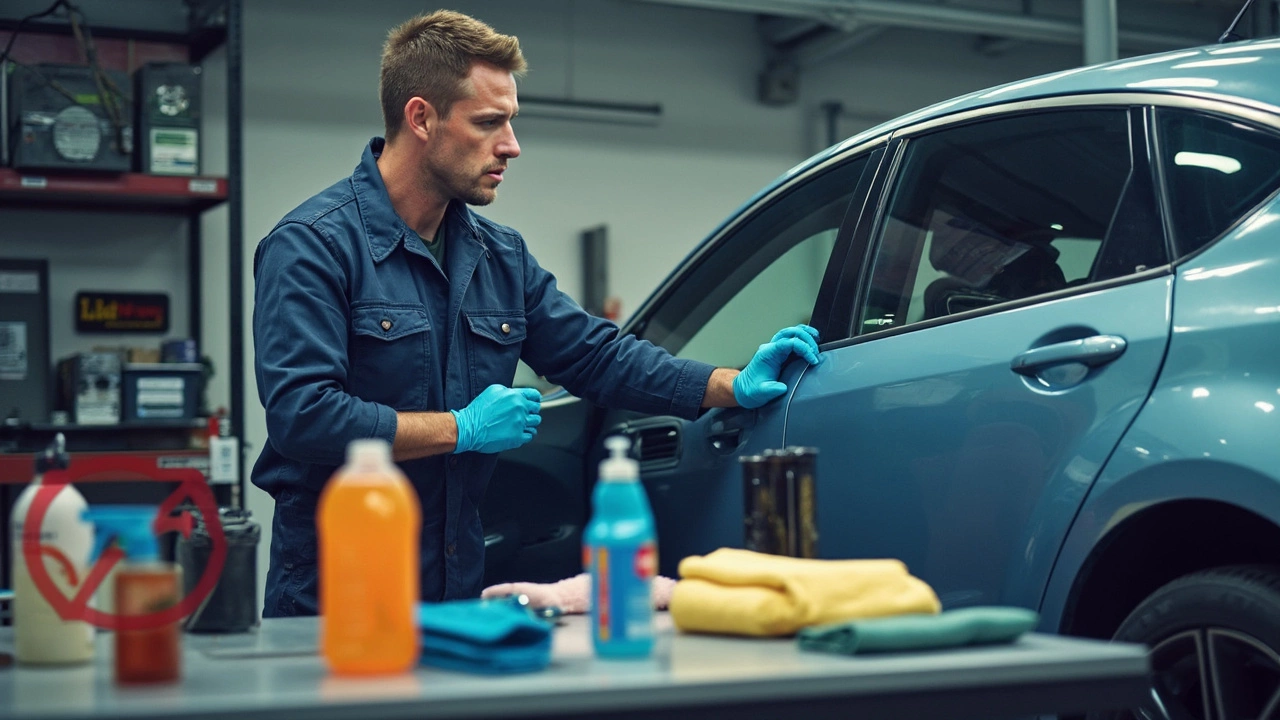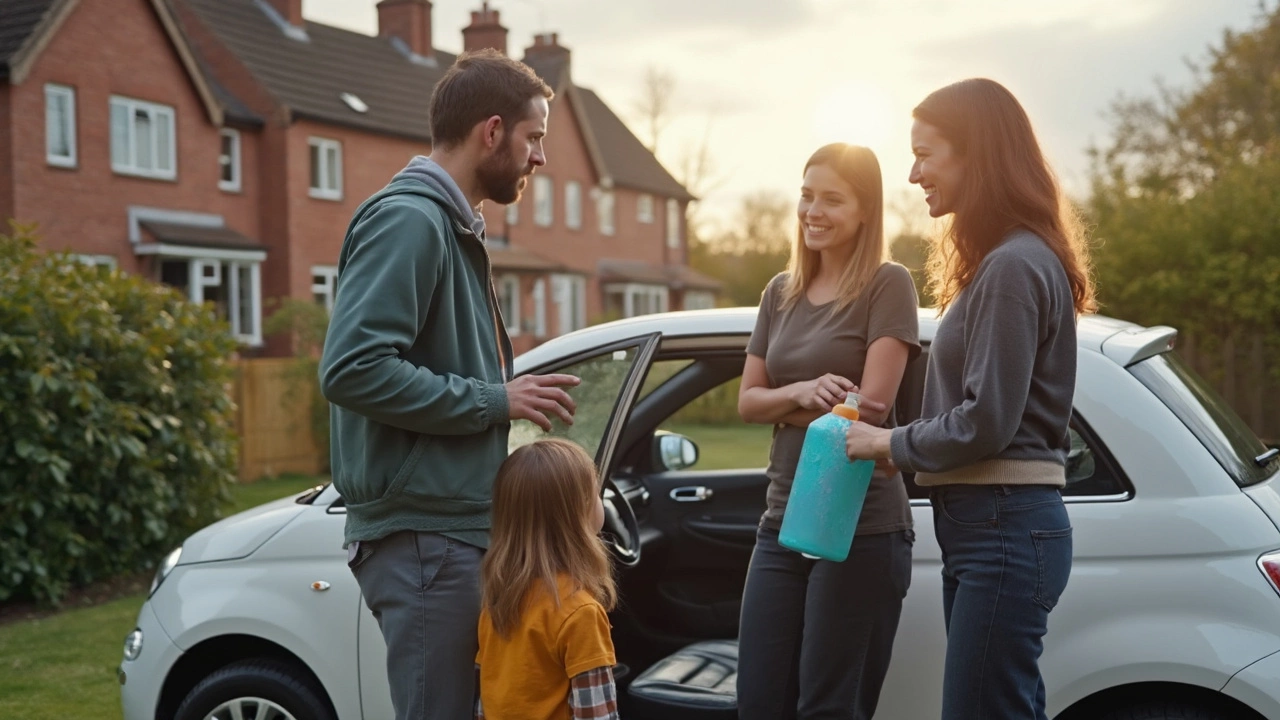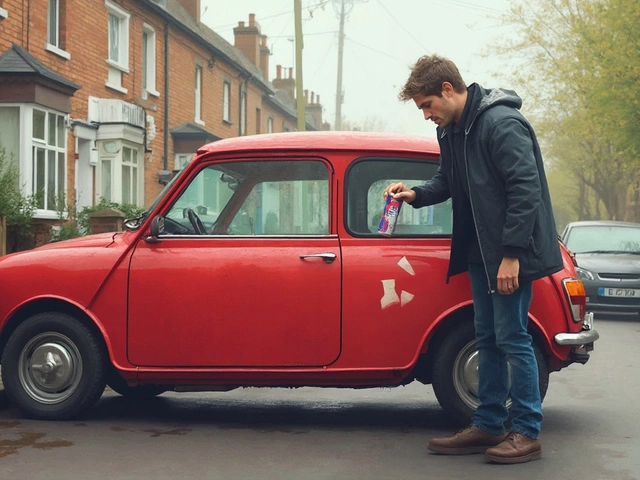So you walk back to your car after lunch, spot a fresh coffee spill on your center console, and your first thought is, “Hey, why not grab the Dawn under my kitchen sink?” After all, it’s a cleaning legend for greasy pans, right?
This idea pops up a lot, probably because Dawn cuts through grime so well on dishes, and plenty of hacks online mention using it for everything—including cars. But here’s the catch: your car interior isn’t made of stainless steel or ceramic. The materials are way more sensitive. Think plastic, vinyl, fabrics, even leather. Using the wrong cleaner, one meant for completely different stuff, isn’t just a little risky—it can straight up ruin surfaces over time.
Car detailing pros don’t just avoid dish soap because they like fancy products. It’s because the formulas in dish soap are built to break down grease, but they also strip away protective coatings or even natural oils from car seats and panels. Next thing you know, your dashboard looks faded or your leather seats start to crack. Not worth it for a quick fix, right?
- Why People Use Dish Soap on Car Interiors
- What Happens When You Use Dawn Inside Your Car
- Pros' Advice: What Actually Works
- Safe and Smarter DIY Interior Cleaning Tips
Why People Use Dish Soap on Car Interiors
Lots of people reach for dish soap when cleaning their car interior, mostly because it’s cheap, easy to find, and famous for cutting through tough grease on kitchenware. People just assume, “Hey, if it blasts bacon fat off my skillet, it’ll totally handle coffee spills on my seats.” Some car forums are loaded with posts from people who say they’ve used dish soap for everything under the sun and swear it left their ride spotless.
It’s also a habit passed down by family and friends. Before car care products became a huge thing, folks used whatever they had lying around, and Dawn dish soap was already on the kitchen counter. Plus, many cleaning hacks online still hype up Dawn for pretty much anything, cars included.
Here’s a quick look at what grabs people’s attention about dish soap:
- It’s safe enough for dishes and removing grease, so it feels gentle compared to harsh chemicals.
- Big brands claim it saves wildlife during oil spills, driving the idea it’s gentle and “green.”
- It’s budget-friendly and you only need a small squirt to make lots of suds.
According to a 2024 survey from Drive Clean Institute, about 37% of car owners in the US have used dish soap at least once on their vehicle's interior surfaces. That’s a huge chunk of drivers taking shortcuts or just not knowing the risks all the way.
| Reason Given | Percent of Respondents |
|---|---|
| Easy to find at home | 62% |
| Cheaper than car-specific cleaners | 45% |
| Trusted for tough grease | 53% |
| Read about it online | 28% |
But professionals don’t buy the hype. As Mark Evans, senior trainer at Simply Clean Detailing Academy, puts it:
“Dish soap is perfect for stripping residue off plates, not for preserving your car’s interior. Interior surfaces have coatings or materials that get damaged by the harsh chemicals in dish soap.”
That’s why those cheap and cheerful hacks might work in the moment, but the hidden damage can show up after a while.
What Happens When You Use Dawn Inside Your Car
The first time you grab Dawn dish soap to wipe down your dash or seats, you might think, “Wow, that was easy.” But the real trouble kicks in after you’ve done this a few times. Here’s what actually happens on the inside—and it’s not just about looks.
- Strips away protective coatings: Most modern cars have a thin shield on plastics, vinyl, and even leather. Dish soap is too harsh for these coatings, and repeated use wears them away. That protective layer helps keep surfaces from fading or cracking in sunlight.
- Makes plastics brittle: The chemicals in Dawn cut through grease, but they also dry out plastic, making it more likely to crack down the line. Older cars are especially at risk.
- Can leave residue: Dish soap isn’t designed to rinse off clean from car materials. You might not see it, but leftover residue can make dashboard and buttons sticky or attract dust even faster than before.
- Damages leather and upholstery: On leather, dish soap pulls out natural oils, leaving it stiff and easy to split. On fabric, it messes with color and feel, making seats look dull sooner. If you’ve got heated or cooled seats, the residue could even mess with tiny holes or sensors.
Still not convinced? The National Carwash Association ran a comparison back in 2022 and found dish soap removed up to 35% more finish from vinyl test samples after just four uses, compared to a typical interior cleaner. That’s not a small difference.
| Test Material | Product Used | % Protective Coating Removed (After 4 Uses) |
|---|---|---|
| Dashboard Vinyl | Dawn Dish Soap | 35% |
| Dashboard Vinyl | Interior Cleaner | 5% |
Bottom line: Even if you’re in a pinch, using dish soap inside your car sets off a chain of problems you’ll wish you’d skipped. Stick to products designed for car interiors. You’ll save money long term and keep your ride looking sharp.

Pros' Advice: What Actually Works
If you ask any detailer whether Dawn dish soap is safe for car interior, you’ll get a quick no. The right cleaning method depends on what you’re dealing with: plastic, vinyl, fabric, or leather. Auto pros don’t just guess—they use products and routines proven to keep interiors clean and lasting longer.
What detailers grab most often are pH-balanced interior cleaners. These are made to lift dirt without breaking down the finish or drying out the surface. For example, a pH between 6 and 8 is considered safe for most car interiors. If you’re going DIY, look for products tagged as “interior safe” or “multi-surface auto cleaner.” They’re easy to find online or at any store with car stuff.
Here’s what you’ll find in a professional’s detailing kit instead of dish soap:
- All-purpose interior cleaners. Usually pH-balanced, and they'll work on most plastics, vinyl, and dashboards.
- Dedicated upholstery foam for fabric seats.
- Leather-specific cleaners and conditioners for actual leather seats—never all-purpose or dish soap.
- Microfiber towels, which pick up dirt without scratching.
- Soft brushes designed for seams and hard-to-reach corners.
Check out these product categories and what most detailers use for different surfaces:
| Surface | Pro-Recommended Cleaner | DIY Tip |
|---|---|---|
| Plastic/Dashboard | pH-balanced all-purpose interior spray | Microfiber plus gentle cleaner |
| Fabric Seats | Upholstery foam or carpet cleaner | Diluted vinegar (light stains only) |
| Leather Seats | Leather cleaner and conditioner | Mild soap & water in a pinch |
| Glass | Ammonia-free auto glass cleaner | 50/50 mix of water and vinegar |
The main thing: don’t mix kitchen cleaners with car supplies. Things made for dishes or countertops might look similar, but the chemistry is different. Stick with products marked safe for your car interior. If you want a quick clean and have nothing else, use just water and a microfiber towel. You’ll avoid weird streaks, dried out dashboards, and the slow destruction of your car’s cabin.
Safe and Smarter DIY Interior Cleaning Tips
Let’s get right to it: you can totally clean your car interior yourself and still avoid the usual newbie mistakes. Forget about using your kitchen’s Dawn dish soap. There are way safer and more effective options out there—many are just as easy to use and affordable, too.
For most car interiors, an all-purpose cleaner made specifically for cars does a way better job. These cleaners are balanced so they don’t strip away finishes, cause drying, or leave sticky residue. You’ll find good options from brands like Meguiar’s, Chemical Guys, or Armor All. If you’re in a rush or on a tight budget, a basic mix of water and a splash of gentle, pH-neutral soap (think baby shampoo) works for spot treating carpeting or cloth seats. Always test in an out-of-sight area first just in case.
Worried about germs? Grab an interior-safe disinfectant (nothing bleach-based or too harsh), spray it onto a microfiber cloth (never directly onto surfaces), and wipe frequently touched spots like door handles, steering wheel, and the shifter.
- Stick with microfiber cloths—the cheap paper towels or old t-shirts are more likely to scratch your infotainment screen or dashboard.
- Use a soft brush, like a clean and dry paintbrush or makeup brush, to dust air vents or tight seams.
- Vacuum first before scrubbing, so you’re not pushing dirt deeper into the surfaces.
- Apply protectants or conditioners made for your car’s specific material—vinyl, leather, or fabric. This keeps your interior looking newer, longer.
Avoid hot, sunny days for cleaning since cleaners could dry too fast and leave streaks or spots. And take it easy with the water—soaked seats or carpets can mean stubborn mildew smells later. Just a light mist or damp cloth goes a long way.
Bottom line: you don’t need to make do with dish soap. A little planning and the right supplies will keep your car interior clean and safe without regrets.




